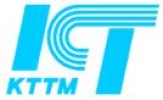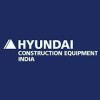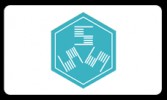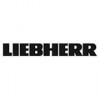Filter interviews by
Stumpp Schuele & Somappa Springs Interview Questions and Answers
8 Interview questions
HT voltage refers to high tension voltage, typically above 1000 volts.
HT voltage is typically above 1000 volts
It is used in high voltage transmission lines and industrial equipment
Examples include 11kV, 33kV, 132kV, and 400kV systems
Springs are mechanical devices that store and release energy when compressed or stretched.
Springs come in various types such as coil springs, leaf springs, and gas springs.
They are commonly used in vehicles for suspension systems, in watches for timekeeping, and in mattresses for support.
The behavior of springs is described by Hooke's Law, which states that the force exerted by a spring is proportional to the disp...
A vernier caliper can check various parameters such as length, diameter, depth, and thickness.
Length
Diameter
Depth
Thickness
The formula for spring rate is the amount of force required to compress a spring by a certain distance.
Spring rate = Force / Distance
The unit of spring rate is N/m or lbs/in
The spring rate is dependent on the material and geometry of the spring
The formula can be used to calculate the spring rate of compression, extension, and torsion springs
Gauges are instruments used to measure and display various physical quantities. Some common gauges are:
Vernier caliper
Micrometer
Dial indicator
Height gauge
Thread gauge
The least count of a vernier caliper is the smallest measurement that can be read on the scale.
The least count is determined by the number of divisions on the vernier scale and the main scale.
It is usually expressed in fractions of a millimeter or inch.
For example, a vernier caliper with 20 divisions on the vernier scale and 1mm on the main scale has a least count of 0.05mm.
The least count is important for accurat...
Springs are mechanical devices that store and release energy when compressed or stretched.
Types of springs include compression springs, extension springs, and torsion springs.
Springs are commonly used in various applications such as automotive suspensions, mattresses, and mechanical pencils.
The definition of a spring is a flexible elastic object that stores mechanical energy.
The question is unclear and needs more information to provide an accurate answer.
The question is missing crucial details such as the context or specific type of voltage being referred to.
It would be helpful to know if the question is asking about low voltage (LV) or high voltage (HV).
Without additional information, it is impossible to provide a meaningful answer.
Stumpp Schuele & Somappa Springs Interview Experiences
9 interviews found
(2 Questions)
- Q1. How many HT voltage
- Ans.
HT voltage refers to high tension voltage, typically above 1000 volts.
HT voltage is typically above 1000 volts
It is used in high voltage transmission lines and industrial equipment
Examples include 11kV, 33kV, 132kV, and 400kV systems
- Q2. How many Lt voltage
- Ans.
The question is unclear and needs more information to provide an accurate answer.
The question is missing crucial details such as the context or specific type of voltage being referred to.
It would be helpful to know if the question is asking about low voltage (LV) or high voltage (HV).
Without additional information, it is impossible to provide a meaningful answer.
Interview Preparation Tips

(1 Question)
- Q1. Types of springs, definition etc
- Ans.
Springs are mechanical devices that store and release energy when compressed or stretched.
Types of springs include compression springs, extension springs, and torsion springs.
Springs are commonly used in various applications such as automotive suspensions, mattresses, and mechanical pencils.
The definition of a spring is a flexible elastic object that stores mechanical energy.
(1 Question)
- Q1. What you know about springs
- Ans.
Springs are mechanical devices that store and release energy when compressed or stretched.
Springs come in various types such as coil springs, leaf springs, and gas springs.
They are commonly used in vehicles for suspension systems, in watches for timekeeping, and in mattresses for support.
The behavior of springs is described by Hooke's Law, which states that the force exerted by a spring is proportional to the displacem...
I appeared for an interview before Apr 2024, where I was asked the following questions.
- Q1. Basics entry level
- Q2. Basics knowledge of Mechanical engineering
I applied via Job Fair and was interviewed before Feb 2023. There was 1 interview round.
(1 Question)
- Q1. Basics Mechanical engineering questions 1. About spring 2. Stress strain curve 3. Engineering project
I applied via Recruitment Consulltant and was interviewed before Jan 2022. There were 2 interview rounds.

(4 Questions)
- Q1. Tell me about your self and ur academic projects details and some basic mechanical department questions About salary
- Q2. As per company standard
- Q3. About ur weakness and strength
- Q4. My weakness is i don't concentrate on other work while doing something
Interview Preparation Tips
Interview Questionnaire
3 Questions
- Q1. Name few gauges?
- Ans.
Gauges are instruments used to measure and display various physical quantities. Some common gauges are:
Vernier caliper
Micrometer
Dial indicator
Height gauge
Thread gauge
- Q2. What and all parameters that can be checked using vernier caliper?
- Ans.
A vernier caliper can check various parameters such as length, diameter, depth, and thickness.
Length
Diameter
Depth
Thickness
- Q3. Formulae for spring rate?
- Ans.
The formula for spring rate is the amount of force required to compress a spring by a certain distance.
Spring rate = Force / Distance
The unit of spring rate is N/m or lbs/in
The spring rate is dependent on the material and geometry of the spring
The formula can be used to calculate the spring rate of compression, extension, and torsion springs
Interview Questionnaire
4 Questions
- Q1. Least count of vernier caliper
- Ans.
The least count of a vernier caliper is the smallest measurement that can be read on the scale.
The least count is determined by the number of divisions on the vernier scale and the main scale.
It is usually expressed in fractions of a millimeter or inch.
For example, a vernier caliper with 20 divisions on the vernier scale and 1mm on the main scale has a least count of 0.05mm.
The least count is important for accurate mea...
- Q2. About yourself
- Q3. Tell me About u r final year project
- Q4. Tell About u r skill
Interview Preparation Tips
dress up good while going to attend interview
Make I contact wid interviewer.
Great the interviewer after meeting them
I applied via Referral and was interviewed before May 2021. There were 2 interview rounds.

Stock
Interview Preparation Tips
I appeared for an interview in Sep 2017.
Interview Questionnaire
1 Question
- Q1. Tell about yourselt and what have you been ding
- Ans.
I am a dedicated quality control professional with 5 years of experience in the manufacturing industry.
I have a Bachelor's degree in Industrial Engineering.
I have been responsible for conducting quality inspections, implementing quality control procedures, and ensuring compliance with industry standards.
I have experience in using various quality control tools and techniques such as Six Sigma, Lean Manufacturing, and St...
Interview Preparation Tips
Experience: resume uploaded in naukri and got short listed
Round: HR Interview
Experience: told every thing what ia am wher i should be after 10 years
Round: related to quality assurance question
Experience: asked few things
Tips: it was simple and answered
Top trending discussions






Interview questions from similar companies

I applied via Recruitment Consultant and was interviewed before Oct 2019. There were 5 interview rounds.
Interview Questionnaire
4 Questions
- Q1. What is meaning of civil engineering.?
- Ans.
Civil engineering is a branch of engineering that deals with the design, construction, and maintenance of infrastructure.
Civil engineering involves the planning, design, and construction of structures such as buildings, bridges, roads, and dams.
It focuses on ensuring the safety, functionality, and sustainability of infrastructure projects.
Civil engineers use principles of physics, mathematics, and materials science to ...
- Q2. How you given organization profits in your allocated job role.?
- Ans.
I have driven profits through process improvements, cost reductions, and innovative solutions in my engineering roles.
Implemented a new automated testing framework that reduced testing time by 30%, allowing faster product releases and increased revenue.
Led a cross-functional team to redesign a key product feature, resulting in a 15% increase in customer satisfaction and a 10% boost in sales.
Optimized supply chain proce...
- Q3. What are the main quality focus on civil engineering field?
- Ans.
The main quality focus in civil engineering is safety, durability, and sustainability.
Ensuring the safety of structures and infrastructure
Designing for durability and longevity
Incorporating sustainable practices and materials
Adhering to building codes and regulations
Conducting thorough inspections and testing
Using advanced technology and software for design and analysis
Collaborating with other professionals to ensure q...
- Q4. How you doing project efficient?
Interview Preparation Tips
Stumpp Schuele & Somappa Springs Interview FAQs
Tell us how to improve this page.
Stumpp Schuele & Somappa Springs Interviews By Designations
- Stumpp Schuele & Somappa Springs Quality Assurance & Quality Control Interview Questions
- Stumpp Schuele & Somappa Springs Quality Assurance Engineer Interview Questions
- Stumpp Schuele & Somappa Springs Store Executive Interview Questions
- Stumpp Schuele & Somappa Springs Quality Inspection Engineer Interview Questions
- Stumpp Schuele & Somappa Springs Graduate Engineer Interview Questions
- Stumpp Schuele & Somappa Springs Electrician Interview Questions
- Stumpp Schuele & Somappa Springs Apprentice Interview Questions
- Stumpp Schuele & Somappa Springs Trainee Interview Questions
- Show more
Interview Questions for Popular Designations
Overall Interview Experience Rating
based on 8 interview experiences
Difficulty level
Duration
Interview Questions from Similar Companies
Stumpp Schuele & Somappa Springs Reviews and Ratings
based on 171 reviews
Rating in categories
|
Senior Engineer
26
salaries
| ₹1.5 L/yr - ₹8.5 L/yr |
|
Graduate Engineer Trainee (Get)
20
salaries
| ₹1.2 L/yr - ₹2.8 L/yr |
|
Production Engineer
19
salaries
| ₹2 L/yr - ₹4.2 L/yr |
|
Deputy Manager
15
salaries
| ₹4.8 L/yr - ₹9 L/yr |
|
Quality Engineer
14
salaries
| ₹1.8 L/yr - ₹3.5 L/yr |

Gilbarco Veeder Root

HYT Engineering

Kirloskar Toyota Textile Machinery

Hyundai Construction Equipment
- Home >
- Interviews >
- Stumpp Schuele & Somappa Springs Interview Questions














